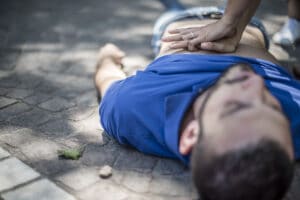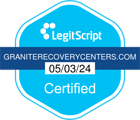The United States currently has the highest drug-related mortality rate in the world, accounting for 1 in every 4 drug-related deaths globally. This shows no signs of slowing down, especially as the Opioid Epidemic continues to plague people across the country. While some progress has been made, such as acknowledgment and more effort being made to combat it on behalf of the government and doctors alike, we still have a very long way to go.
Advancements that have been made to prevent overdose deaths include medications and also physical countermeasures that can save someone’s life when responding to an overdose. Here we outline the steps you can take if you come across someone experiencing an overdose, the various methods you can utilize, and ways to always be prepared for this type of emergency.
Initial Assessment of Situation
Overdose Assessment
The first stage of response would be assessing the person and situation using the best of your knowledge. The person may have bluish lips or extremities due to lack of oxygen. Also look for traces or physical evidence of the substance that was ingested, as this will help you quickly determine what to do next. Please note that this is simply a visual identification method to assist with your next course of action—do not pick up or touch any substances you see because there are potential dangers with certain substances. There are classes of drugs so potent (such as carfentanil and methamphetamines) that are so toxic, even minimal physical contact could pose danger. If there is nothing present or visually clear to you what was taken, there are still ways to help.
Verbal Stimuli and Physical Response
Determine if the person is conscious or capable of hearing you/registering their name being said, or by tapping their arm to see if they become alert. Their level of responsiveness can help you know their physical state.
Sternum Rub
If someone doesn’t respond to saying their name or physically trying to wake them, the next step may be the sternum rub. The way you do this is to apply your knuckles (in a closed fist) to the center of the person’s chest (right into the sternum where their ribs meet). If they are awoken by the sternum rub, try to get them to focus and speak to assess their current state.
Please keep in mind that this isn’t a way to get someone out of an overdose; it’s just to determine if someone is just in a “hard nod” (very high), or that they might be potentially entering an overdose/are in an overdose.
Next Steps to Take
If someone doesn’t respond to the sternum rub, a more urgent response is necessary.
Rescue Breathing
With an opiate overdose, it affects primarily the breathing initially, so we would next employ rescue breathing to open the airway.
- Roll person onto their back, tilt their head back and pinch their nose
- Give mouth to mouth 2 regular breaths
- Look, listen and feel their chest for responsiveness
- If no breathing begins, give 1 breath every 5 seconds
- Continue to do several times
If you have administered rescue breathing and it was not successful, it’s time to try the next step.
Administer Narcan
One life-changing advancement that has been made is the invention and availability of an opioid reversal drug called Narcan, also known as Naloxone. Narcan is a medication that can be administered to block or reverse the effects of opioids.
How do I use Narcan?
It is often used to counter decreased breathing that occurs during an opioid overdose and can be given intravenously, injected via muscle, or sprayed into a person’s nose. It’s important to note that because Narcan is now available in a few different types of intra-nasal kits, there are a number of potential challenges with people unfamiliar with the assembly process. So if possible, the pre-assembled 4mg kits are preferable.
What to Know About Narcan
- It’s better to use more than not enough
- It’s is not harmful to the person no matter what
- Takes 1-2 minutes to take effect
- Lasts between 30-90 minutes (please note that if the Narcan wears off, an overdose may recur, so it is advised to stay with the person in case they will need another dose)
- Works for all opiates/opioids
- Does not work for any other kind of substance overdose
If Narcan has been administered and was successful, you should note the following:
- Color coming back into the body
- Person will likely be irritable due to immediate withdrawal effects that occur
- Person is unlikely to have any memory of the event
- If other drugs that are not opiates were consumed (such as alcohol, benzos, cocaine, etc.), those drugs and their potential overdose symptoms will still be in full effect
- Depending on the potency of the opiate, they might require more Narcan
- Follow up with medical attention
If you administered the Narcan on your own and it was successful, you still want to make sure the person gets medical attention. The Narcan will wear off, as noted above, and the person may go back into an overdose. Even if they do not, there is potential they may use again, and so you will want to follow through with a full medical evaluation, the attention of first responders, or bring the person to the hospital or the ER to make sure their vital signs are stable.
Call 911
If none of these steps are successful in reviving the person who has overdosed, their need for emergency help is crucial. Call 911 and immediately state that someone is not breathing. If you choose to, you can explain that it might be an opiate overdose, but sometimes people will advise against this because dispatch at 911 is tasked with queuing calls with priority from high-risk situations to low risk. For that reason, in order to ensure the quickest response, it is sufficient to say that someone is not breathing.
In the best-case scenario, surviving an overdose can be a teachable moment for the person using drugs that may encourage them to seek professional help. It is a very scary time for everyone involved, including those administering the overdose reversal techniques. Please know that your assistance with the situation is so important, and being prepared and well-read on the topic could save someone’s life.
















